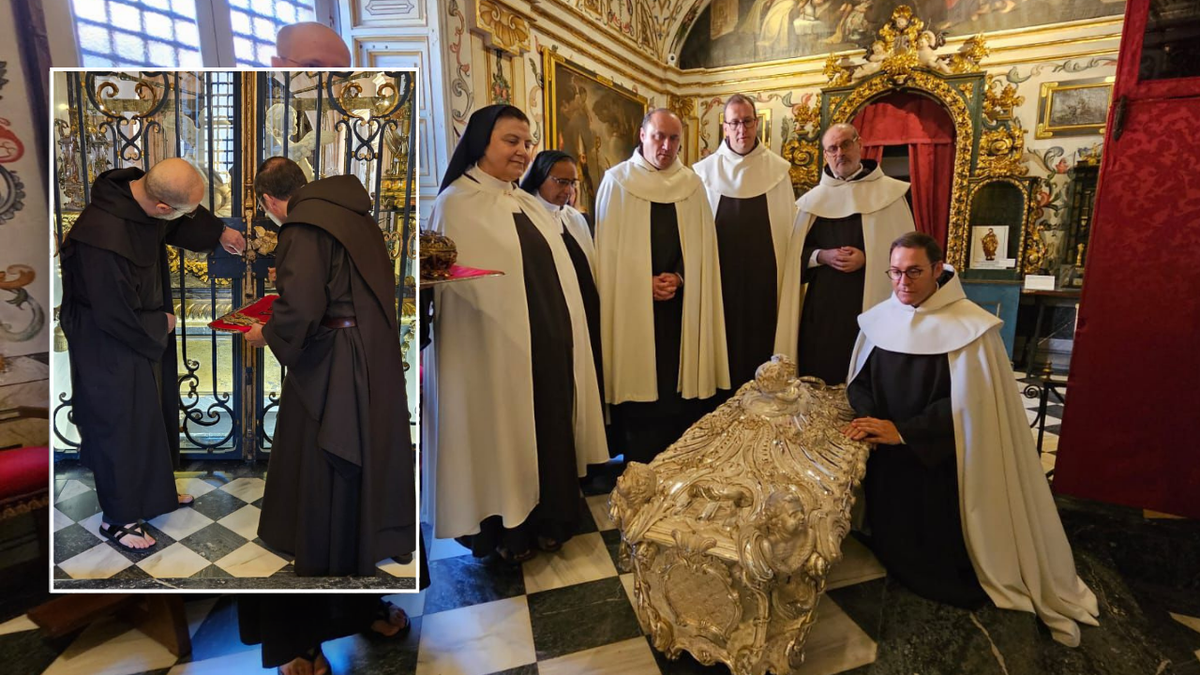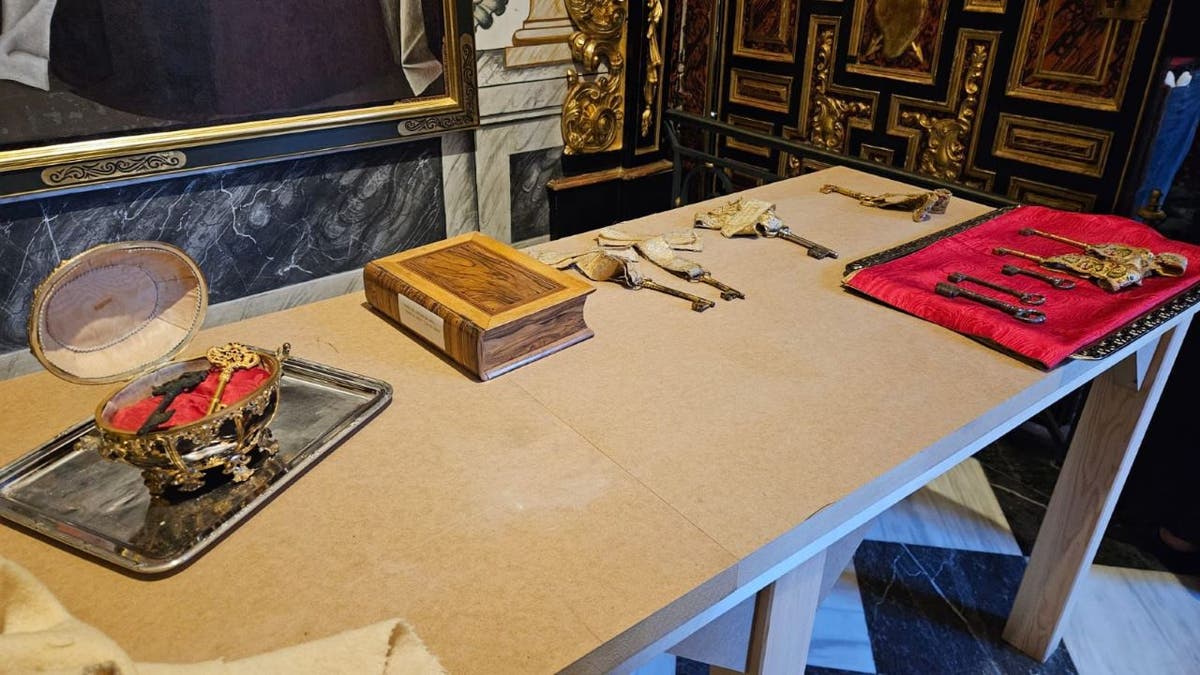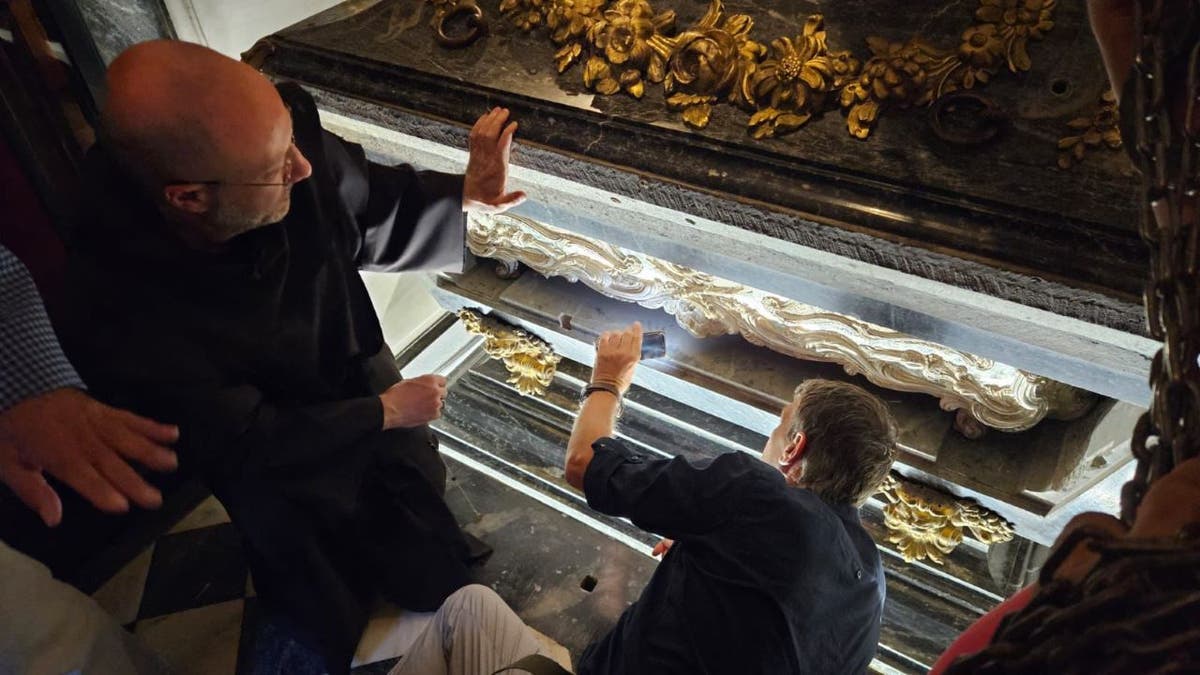Biden meets with Pope Francis amid abortion policy criticism
Fox News White House correspondent Jacqui Heinrich provides further details on President Biden's visit to Italy on 'Special Report.'
A tomb of a medieval Catholic saint was recently opened last month for research – and the condition of her body stunned those who found her.
In an Aug. 28 press release translated from Spanish to English, the Diocese of Avila announced the recent opening of the tomb of St. Teresa of Jesus. The saint, also known as St. Teresa of Avila, was a Discalced Carmelite nun who died in 1582.
The diocese, which is located in Spain, explained that the tomb was last opened in 1914. The tomb contains most of St. Teresa's corpse, and has reportedly "remained incorrupt since 1582," according to the diocese.
MISSOURI DIOCESE PROVIDES UPDATE ON EXHUMED NUN WHOSE BODY DID NOT DECOMPOSE: 'HIGHLY ATYPICAL'
A group of Discalced Carmelite nuns, monks and priests opened up her tomb as part of an intricate process to study the relics of St. Teresa's heart, hand and arm.
Fr. Miguel Ángel González said in the press release that the reliquaries were moved with "austerity and solemnity," and with "hearts full of emotion."

The tomb of St. Teresa of Avila was recently opened, with Carmelites finding her corpse in "incorrupt" condition. (The Order of Carmel in the Diocese of Avila, Spain)
"The process to reach the silver urn that Saint Teresa's body has is very complex," the translated press release states.
"First, the marble slab in the tomb had to be removed. Later, in the room set up for the studies to which the Saint's major relics will be subjected – and only with the presence of the scientific medical team and the members of the ecclesiastical court – has the silver tomb been opened."
According to Fr. Marco Chiesa, the remains of the saint have been preserved remarkably well. Discalced Carmelites consulted the 1914 photographs of the saint's corpse to see if the physical condition of Teresa's body had changed.
"The uncovered parts, which are the face and foot, are the same as those they were in 1914," Chiesa said in the press release. "There is no color, there is no skin color, because the skin is mummified, but it is seen, especially in the middle of the face."

According to the Carmelite priests and nuns that opened St. Teresa's tomb, her body was found perfectly preserved. (The Order of Carmel in the Diocese of Avila, Spain)
"[It] looks good," he added. "Expert doctors see Teresa's face almost clearly."
Studying the saint's body also helped researchers understand the health conditions she suffered from before she died.
CLICK HERE TO SIGN UP FOR OUR LIFESTYLE NEWSLETTER
"We know that the last few years were difficult for her to walk, in the pains she herself describes," Chiesa said.
For more Lifestyle articles, visit www.foxnews.com/lifestyle
"Sometimes, looking at a body, you discover more than the person had [spoken about]."

The opening of St. Teresa of Avila's tomb was done solemnly, according to the Carmelite order. (The Order of Carmel in the Diocese of Avila, Spain)
"Analyzing the foot [relic] in Rome, we saw the presence of calcareous spines that make walking almost impossible," the priest added.
"But she walked [to] Alba de Tormes and then died, but her desire was to continue and move forward, despite the physical defects."
CLICK HERE TO GET THE FOX NEWS APP
According to Chiesa, the analysis of Teresa's corpse is still in the early stages, but he expects that the project will teach researchers how to better preserve relics.

St. Teresa of Avila died in 1582 and suffered medical issues prior to her death. (The Order of Carmel in the Diocese of Avila, Spain)
"We know, from similar studies, that we will be able to know data of great interest from Teresa and also recommendations for the conservation of the relics, but that will be at another stage," the priest said.


